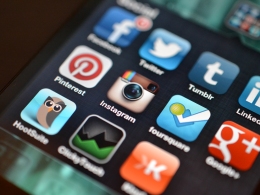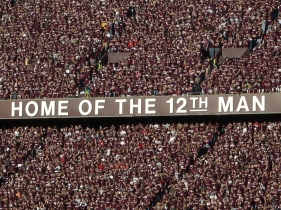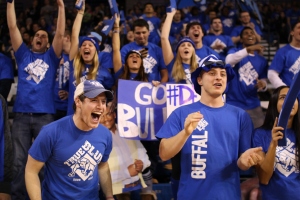The future is looking bright for the Class of 2015… or is it?!?
CareerBuilder, the largest online career site in the U.S., released a survey Thursday stating 65% of companies plan to hire more college graduates this year. That is up 57% last year and the highest outlook since 2007. One third will also offer to pay more than last year.
“They still face challenges, however. One in five employers feel colleges do not adequately prepare students with crucial workplace competencies, including soft skills and real-world experience that might be gained through things like internships.” -Rosemary Haefner, CareerBuilder’s Chief Human Resources Officer
 Rewind. You can’t place all the blame on colleges for not preparing students for the “real-world.” Many universities are helping students play catch-up because they didn’t learn valuable skills in high school.
Rewind. You can’t place all the blame on colleges for not preparing students for the “real-world.” Many universities are helping students play catch-up because they didn’t learn valuable skills in high school.
The documentary Declining by Degrees: Higher Education at Risk highlights several reasons colleges may partly be at fault for hindering development between admission and graduation.
Bigger isn’t always better. Keith Caywood was one of 37,000 students at Arizona State University before dropping out. He says, “I got swallowed up. I didn’t know where any of my classes were. It was such a large campus.” When he did manage to find his classes, they were often packed with 200 students and, “no one knew if I was there or not.” Smaller classes would allow instructors to provide the interpersonal or people skills 52% of employers say graduates lack.
Lectures are no longer effective. CareerBuilder’s survey found 46% of companies say there is too much emphasis on book learning. Tom Fleming, a UA professor, found his teaching to be more effective if he met students halfway. By incorporating technology, interactive responses, and real-world situations, he was able to make astronomy engaging to individuals taking the class to fulfill a requirement. Western Kentucky University offered a specific Spanish class that allowed journalism/broadcasting students to learn the foreign language by producing newscasts, designing magazine covers, and writing scripts.
The documentary also touched on how instructors are more focused on research because it’s the only way they’re rewarded by administrators, how college isn’t demanding enough for some people, the stress students face trying to pay for tuition, and how universities have tunnel-vision on building impressive amenities and sports programs.
Every student’s college experience is unique. It’s really up to each individual student to do their research to ensure they’re going to get the best education. After all, you get out what you put in.



